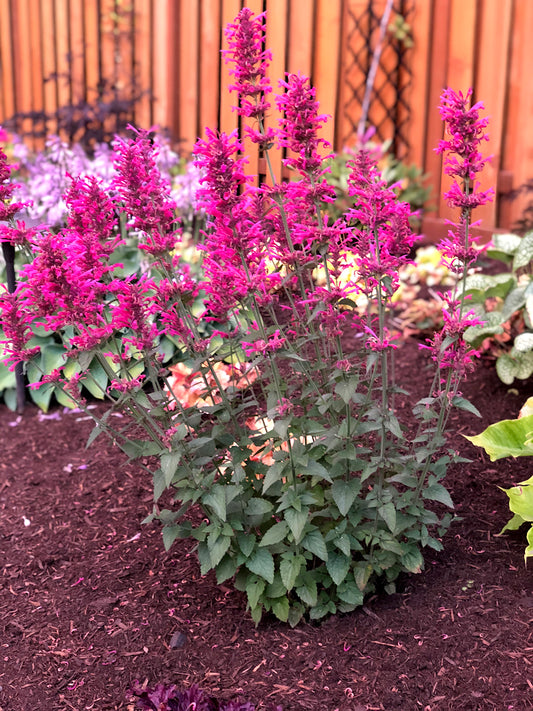Collection: Agastache Plants For Sale
Agastache plants are bold perennials with scented foliage that enhance the summer garden!
Growing Agastache:
Agastache plants are rewarding perennials that are easily grown under the right conditions. The two biggest criteria for growing agastache are well-draining soils and full sunlight. Well-draining soil will keep the crown from rot, improving overall root health, and drought tolerance. As a rule of thumb agastache prefer to wilt over being excessively wet. Soils with poor drainage can be enriched with compost and aerated with a rotary tiller or garden fork to incorporate the compost into the soil. In full sunlight foliar diseases are brought to a minimum or eliminated altogether. The shoots and stalks of agastache plants are sturdier in full sunlight and more able to withstand heavy rain and wind.
Planting Agastache:
After, finding or preparing the right spot it's time to plant. Water the pots deep until water runs from the drainage holes. Use your favorite all-purpose fertilizer (following directions on the package) or 1" of compost spread generously over the planting area. Then, with a garden fork or shovel mix the fertilizer or compost into the top layers. It is beneficial to break up large clods of dirt as you are mixing. Take plants out of their pots and loosen the bottom of the root ball with your fingers. Next, make a hole in the loose ground slightly bigger than the rootball. Set the plant in the hole so the top of the rootball is 1/4" underneath the existing soil line and backfill with dirt. Firm the dirt around the plants while taking any excessive dirt away from the crown (where foliage and roots meet). If the crown is buried it is prone to rot. Water the planting in deep to eliminate any air pockets underneath the rootball. Once the planting dries off mulch with at least an 1" of wood chips/nuggets, straw, or pine needles making sure to keep the mulch away from the crowns. If planting in the spring or fall no additional watering should be needed. Summer plantings will probably need to be watered weekly until the plants are established.
Growing On:
Trim the dead top growth of the plants in late fall or winter back to 2" above the crown. At that time of year, the basal clump of green foliage should be present making the crown visible and the cut should be made above this clump. We typically leave them longer into winter as the songbirds love the seed heads. Scratch an all-purpose fertilizer or compost around the plants in early spring yearly. Reapply mulch as needed in the fall.
Wildlife:
Butterflies, beneficial insects, hummingbirds, and songbirds love these plants. They are perfect additions to the vegetable garden for attracting beneficial insects. Deer do not prefer to eat the licorice scented foliage.
-
Agastache 'Apricot Sprite' Plants
Regular price $ 12.95 USDRegular price -
Agastache 'Blue Boa' - 1 Plant
Regular price $ 12.95 USDRegular price -
Agastache 'Morello' Plants
Regular price $ 12.95 USDRegular price


